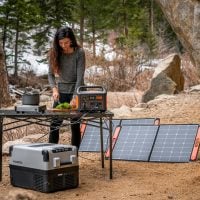Wildlife protection grants are essential financial resources aimed at supporting organizations dedicated to the conservation of wildlife and their habitats. These grants can come from various sources, including government agencies, private foundations, and international organizations. The primary goal of these funds is to promote biodiversity, protect endangered species, and restore ecosystems that have been damaged by human activity.
As the world faces unprecedented environmental challenges, the importance of these grants cannot be overstated. They provide the necessary funding for research, community engagement, habitat restoration, and educational programs that raise awareness about wildlife conservation. The landscape of wildlife protection grants is diverse, with opportunities tailored to different needs and objectives.
Some grants focus on specific species or ecosystems, while others may support broader conservation initiatives. Understanding the nuances of these grants is crucial for non-governmental organizations (NGOs) seeking funding. By familiarizing themselves with the various types of grants available, NGOs can better align their projects with the priorities of funding bodies, thereby increasing their chances of securing financial support.
This overview serves as a foundation for NGOs to explore the world of wildlife protection grants and identify how they can leverage these resources to further their conservation efforts.
Identifying the Right Grant Opportunities for Your NGO
Finding the right grant opportunities is a critical step for any NGO focused on wildlife protection. The first step in this process is to conduct thorough research on potential funding sources. This involves exploring government websites, foundation databases, and online grant directories that specialize in environmental and wildlife conservation funding.
By utilizing these resources, NGOs can compile a list of grants that align with their mission and project goals. It’s important to pay attention to eligibility criteria, application deadlines, and specific focus areas of each grant to ensure a good fit. Once potential grants have been identified, NGOs should assess their own capabilities and resources.
This includes evaluating the organization’s track record in wildlife conservation, the expertise of its team members, and the feasibility of proposed projects. A well-defined project that aligns with the goals of a grant-making body will stand a better chance of success. Additionally, NGOs should consider reaching out to previous grant recipients for insights into their experiences and any tips they may have for navigating the application process.
This proactive approach not only enhances understanding but also builds a network of support within the conservation community.
Crafting a Compelling Grant Proposal: Tips and Tricks
A compelling grant proposal is the cornerstone of a successful application. It should clearly articulate the project’s objectives, significance, and expected outcomes while demonstrating how it aligns with the funder’s priorities. To begin crafting an effective proposal, NGOs should start with a strong executive summary that captures the essence of the project in a concise manner.
This section should highlight the urgency of the issue being addressed and outline the proposed solution in a way that resonates with potential funders. In addition to a strong executive summary, NGOs should provide detailed information about their organization’s mission, past successes, and relevant experience in wildlife protection. Funders are more likely to support projects led by organizations with a proven track record.
Furthermore, including specific data and case studies that illustrate the impact of previous initiatives can bolster credibility. It’s also essential to outline a clear budget that details how grant funds will be allocated, ensuring transparency and accountability. By following these tips and tricks, NGOs can create proposals that not only capture attention but also inspire confidence in their ability to deliver meaningful results.
Leveraging Data and Research to Strengthen Your Application
In today’s data-driven world, leveraging research and statistics can significantly enhance a grant application. Funders are increasingly looking for evidence-based approaches to conservation efforts, making it essential for NGOs to incorporate relevant data into their proposals. This could include information on species populations, habitat loss rates, or the effectiveness of previous conservation strategies.
By presenting compelling data, NGOs can demonstrate the urgency of their project and its potential impact on wildlife protection. Moreover, citing reputable studies or collaborating with academic institutions can further strengthen an application. For instance, if an NGO is proposing a project aimed at restoring a specific habitat, referencing scientific research that outlines best practices for restoration can lend credibility to their approach.
Additionally, NGOs should consider conducting their own research or surveys to gather localized data that supports their project’s objectives. This not only enriches the proposal but also showcases the organization’s commitment to informed decision-making in wildlife conservation.
Building Partnerships and Collaborations to Enhance Your Grant Application
Building partnerships and collaborations can significantly enhance an NGO’s grant application by demonstrating a collective commitment to wildlife protection. Funders often favor projects that involve multiple stakeholders, as this indicates a broader impact and shared responsibility for conservation efforts. NGOs should actively seek out partnerships with other organizations, government agencies, academic institutions, and local communities that share similar goals.
These collaborations can lead to innovative solutions and resource sharing that strengthen project proposals. When outlining partnerships in a grant application, it’s important to clearly define each partner’s role and contributions to the project. This not only showcases a well-rounded approach but also highlights the collaborative spirit of the initiative.
For example, if an NGO is working on a project to protect an endangered species, partnering with local communities can provide valuable insights into traditional practices that support conservation efforts. Additionally, involving researchers can enhance the scientific rigor of the project. By presenting a united front through partnerships, NGOs can increase their chances of securing funding while fostering a sense of community engagement in wildlife protection.
Navigating the Grant Application Process: Dos and Don’ts
Follow Application Guidelines Carefully
One crucial “do” is to carefully read and follow all application guidelines provided by the funding organization. Each grant may have specific requirements regarding format, length, and content that must be adhered to in order to avoid disqualification.
Avoid Common Pitfalls in Proposals
On the flip side, one significant “don’t” is to avoid using jargon or overly technical language in proposals. While it’s important to convey expertise, clarity is paramount; funders may not be familiar with specialized terms or concepts. Instead, proposals should be written in an accessible manner that communicates ideas effectively to a diverse audience.
Proofread and Edit Thoroughly
Another common pitfall is neglecting to proofread applications before submission. Typos or grammatical errors can detract from professionalism and credibility. By submitting applications well before deadlines, NGOs can allow for any unforeseen issues that may arise during the process.
By adhering to these dos and don’ts, NGOs can navigate the grant application process more effectively and increase their chances of success.
Maximizing Impact: Strategies for Effective Grant Management
Once an NGO secures a wildlife protection grant, effective management becomes crucial for maximizing impact and ensuring accountability. One key strategy is to establish clear goals and measurable outcomes at the outset of the project. By defining what success looks like from the beginning, organizations can track progress and make necessary adjustments along the way.
Regular monitoring and evaluation not only help in assessing impact but also provide valuable insights for future projects. Another important aspect of effective grant management is maintaining open communication with funders throughout the project lifecycle. Providing regular updates on progress, challenges faced, and lessons learned fosters transparency and builds trust with funding organizations.
Additionally, sharing success stories or significant milestones achieved during the project can strengthen relationships with funders and potentially open doors for future funding opportunities. By implementing these strategies for effective grant management, NGOs can ensure that they not only meet their objectives but also create lasting positive change in wildlife protection.
Beyond the Grant: Sustaining Wildlife Protection Initiatives
While securing grants is vital for initiating wildlife protection projects, sustainability is equally important for long-term success. NGOs must consider how they will continue their initiatives beyond the life of a grant. One effective approach is to develop a comprehensive sustainability plan that outlines strategies for ongoing funding and community engagement.
This could involve diversifying funding sources by exploring corporate sponsorships, individual donations, or crowdfunding campaigns. Additionally, building strong relationships with local communities is essential for sustaining wildlife protection efforts. Engaging community members as active participants in conservation initiatives fosters ownership and commitment to protecting local ecosystems.
Education programs that raise awareness about wildlife conservation can also empower communities to take action independently. By focusing on sustainability from the outset and fostering community involvement, NGOs can ensure that their wildlife protection initiatives endure long after grant funding has ended. In conclusion, navigating the world of wildlife protection grants requires careful planning, strategic thinking, and collaboration.
By understanding grant opportunities, crafting compelling proposals, leveraging data, building partnerships, managing grants effectively, and focusing on sustainability, NGOs can enhance their chances of securing funding while making meaningful contributions to wildlife conservation efforts worldwide.









































